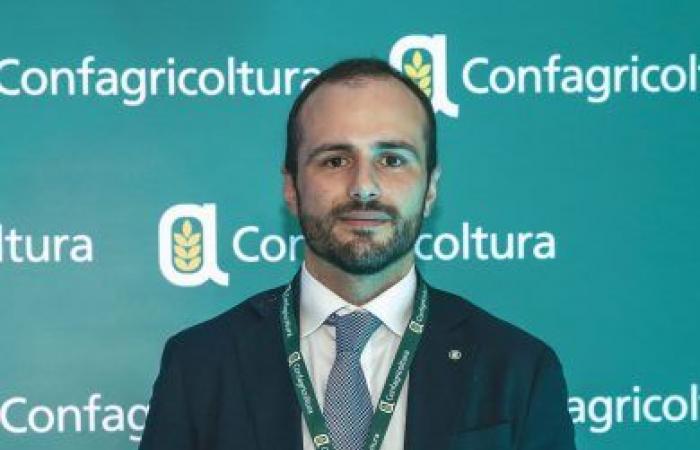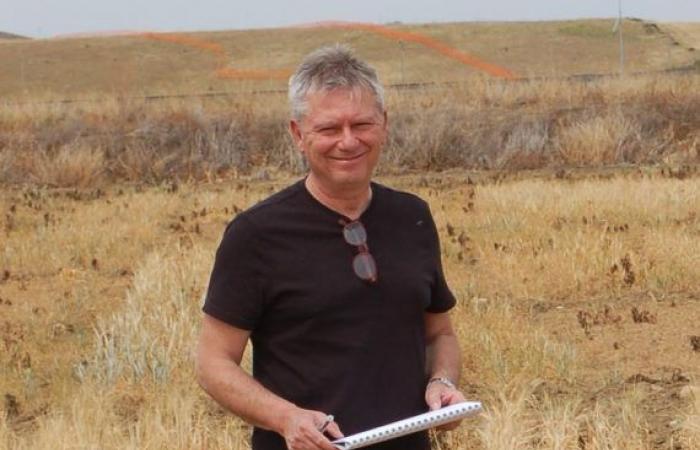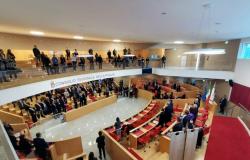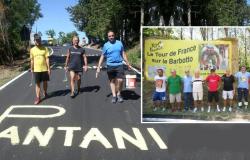Drop in yields between 70 and 90%. In some areas of the island it hasn’t rained for a year. Only the fields in the north-western area were saved
Anyone traveling along the Palermo-Catania motorway finds himself faced with a landscape of death and desolation. These days, in the past, the golden yellow of the ears of wheat filled the eyes with joy. Today it’s all dark, burnt. Not from fire, but from drought. The plants did not grow, the tillering was very poor and there were few ears on the culms with only one-two-three shriveled seeds.
In Libertinia, the experimental agricultural company of Crea-Ci (cereal cultivation and industrial crops) located halfway between Enna and Catania, in the experimental plots only dry stems bearing a few practically empty ears. «This is the first year in which we won’t do threshing – he says dejectedly Nino Virzì, Crea researcher and manager of the Libertinia company –. We are not alone in not harvesting cereals: the situation is similar throughout the Catania and Enna areas.”
The numbers, at the moment, with the combine harvesting having just begun in the lower altitude areas, are fluctuating, but in any case disheartening: in Sicily due to the drought a cut in yields of between 70 and 90% is expected. After all, there are areas where it hasn’t rained for a year. Others – like Libertinia – where only 100 millimeters of rain rained: «A real negative record» observes Virzì.
Without refreshments, farmers are broke
In the province of Caltanissetta the situation is desperate. Farmers are practically at the gas pipe. Company (and family) budgets no longer hold up. They deal with the expenses they have incurred, with the revenues that will not be there and with the savings that are now about to end. After scraping the bottom of the barrel, only the hope of extraordinary help remains.
“Without adequate refreshments it is impossible to continue to do income farming and monitor the territory for everyone’s safety” he warns Giovanni Gioia, national president of Anga and owner of a cereal company in Marianopoli nel Nisseno, where, in the absence of wheat to be harvested, the company combine harvester was not even adjusted. «Such devastating calamities cannot be faced with existing tools – underlines the young entrepreneur from Confagricoltura – it is necessary to implement exceptional measures that really help farmers to emerge from this crisis. Simple systems that avoid entanglement in bizarre methods aimed at demonstrating loss of income. There’s no point in beating around the bush: this year no sales invoices will be issued because we have no product to sell and there will be no income for many.”
Giuseppe Li Rosi, president of “Simenza” – Cumpagnìa Siciliana Sementi Contadine” the aggregation of farmers, breeders, processors, researchers and professionals born in 2016 with the aim of protecting and enhancing the vast heritage of Sicilian agrobiodiversity shakes his head: «In in the Enna hinterland, where my fields and those of many Simenza members are located, we are faced with true desolation. The combine harvesters will remain in the sheds: the harvest is so poor that not even the contractor’s expenses can be recovered.”
Li Rosi, however, admits that, however low those of his fields are (it will barely reach 10% of standard production) he will still proceed with threshing: «The project of evolutionary mixtures that I have been carrying out for years with numerous partners cannot and must not stop . The little I will collect will serve to highlight those more resilient genotypes that have managed to overcome this climate crisis too.”
Subirrigation also for wheat
The ax of the drought that has hit Sicilian cereal cultivation brings Pietro Di Marco, president of the Pro.bio.si coop to reflect on how to approach the future. So much so that we cannot exclude the possibility of adopting sub-irrigation for durum wheats that have a market (ancient and organic). It’s like breaking a taboo: water is a precious commodity and until now it has been reserved for more profitable crops.
But faced with the specter of abandonment (many have already decided not to sow anymore) Di Marco has no doubts: «we must revolutionize our way of thinking about Sicilian cereal farming by aiming for on-site transformation and closing the supply chain in Sicily. And those who have had the opportunity to create lakes and basins outside the riverbed in the past or will be able to do so in the future in areas where dry cultivation has always been practiced, must begin to think about how to best use even small quantities of water, which today more than ever remains the most precious resource for agriculture.”
Manuela Morello, owner of the “Acque di Palermo” company in Roccapalumba which is located on the lower Madonie mountains, is about to start harvesting but is not at all optimistic: «The yields of my fields are close to 4/5 quintals per hectare. There are those who do more, but it doesn’t exceed a third of the usual production.”
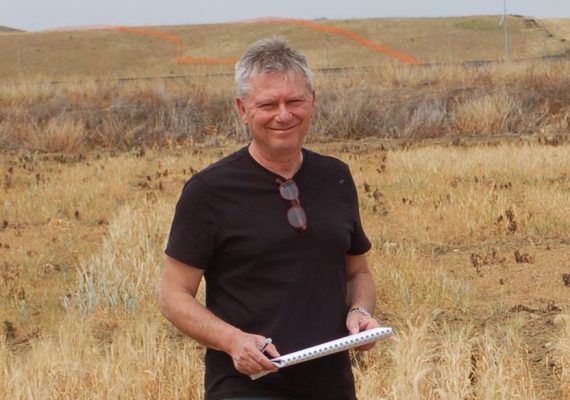
But there are those who managed to get away with it
It seems that the longer cycle varieties did better, but, at least in western Sicily (Palermo, Agrigento and Trapani), three parameters influenced the most: altitude, exposure and soil type. Biagio Randazzoagronomist, owner of a seed company and breeder, claims that in the areas above 700 meters and exposed to the North, the drop in yields will not be practically appreciable also because the crops have managed to take advantage of the limited rains in April.
«Below 500 meters above sea level and especially in areas exposed to the South – explains Randazzo – the four-five days in April in which the sirocco blew were enough to ruin production». According to the technician, the sowing time also had a significant influence on the yields. In fact, the state of the crop depended on this when the few rains occurred. The early sowings, apparently, allowed the plants to make the most of even a few millimeters of rain. «Then there are also the phytotoxic effects of herbicides to consider which have amplified the consequences caused by drought».
In short, obtaining satisfactory yields this year is like winning a lottery. It took luck to find suitable varieties and sowing times. But there are those who didn’t miss the terno this time too. In the area of Corleone and Roccamena, in the Palermo hinterland, this too annus horribilis the deep, clayey soils will make the difference as always. There will be reduced yields (expected 50 quintals per hectare compared to the usual 70-80), but still acceptable compared to those who will not even be able to recover the costs for sowing and cultivation.

